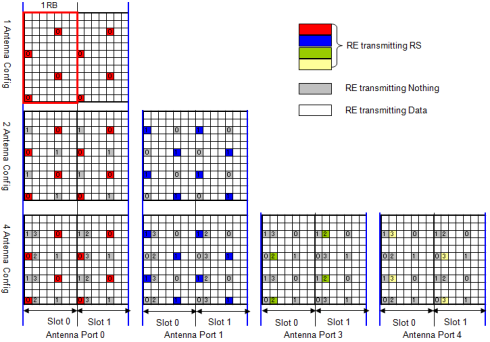I recently was contacted by someone with questions regarding a document I wrote (LTE PHY fundamentals) a few years ago as part of a class at Columbia University and that is hosted on my website. The confusion was regarding Doppler shift and the time separation of the reference signals in LTE.
Quoting the message:
I was trying to tell you that 500 km/h does not mean a Doppler shift that you wrote in your document. If the carrier frequency is low and the receiver is moving through the transmitter Doppler shift will be zero cos(90).
Please read the LTE documentation carefully: Universal Mobile Telecommunications System (UMTS); LTE; Requirements for Evolved UTRA (E-UTRA) and Evolved UTRAN (E-UTRAN). In chapter 7.3, it is clearly written that this speed can be from 15 to 120 in the best case with a Doppler shift, not 500 as you wrote and even calculated the Doppler shift.
After responding to the question, I thought that it would be a good idea to write a quick post here and reference it from my website to clarify this topic if other people had the same questions.
The 3GPP standards do account mobility of up to 500km/h. Checking ETSI TR 125 913 V9.0.0 (Universal Mobile Telecommunications System (UMTS); LTE; Requirements for Evolved UTRA (E-UTRA) and Evolved UTRAN) one can read:
The E-UTRAN shall support mobility across the cellular network and should be optimized for low mobile speed from 0 to 15 km/h. Higher mobile speed between 15 and 120 km/h should be supported with high performance. Mobility across the cellular network shall be maintained at speeds from 120 km/h to 350 km/h (or even up to 500 km/h depending on the frequency band). Voice and other real-time services supported in the CS domain in R6 shall be supported by EUTRAN via the PS domain with at least equal quality as supported by UTRAN (e.g. in terms of guaranteed bit rate) over the whole of the speed range. The impact of intra E-UTRA handovers on quality (e.g. interruption time) shall be less than or equal to that provided by CS domain handovers in GERAN.
The mobile speed above 250 km/h represents special case, such as high speed train environment. In such case a special scenario applies for issues such as mobility solutions and channel models. For the physical layer parametrization EUTRAN should be able to maintain the connection up to 350 km/h, or even up to 500 km/h depending on the frequency band.
Regarding this topic, Samsung did some very interesting experiments on the high speed case inside a plane flying at 750km/h. Also, a recent paper was presented in a Sigcomm workshop that I was part of the TPC committee. It presented high speed measurements of LTE (check the paper titled “Performance of LTE in a High-velocity Environment: A Measurement Study”).
As for the Doppler shift, the Doppler equation does contain a cos(alfa), but alfa will only be 90 degrees when a mobile is under the cell tower, In general, in mobile communications, one does not consider the special case of alfa=0 (see below for more details). Anyhow, the way system specifications are designed is for the worst case scenario. In the case of LTE, the maximum possible doppler shift is for the highest carrier frequency (~2GHz at the time I wrote the document), V=500km/h and alfa=0 (cos(0)=1). That’s why the separation of the pilot tones in the LTE/OFDMA lattice is 0.5ms (the derivation of the value 0.5ms is in my document). Essentially, the Doppler shift defines the coherence time, which is the duration of time for which the channel does not change “substantially” or, more mathematically defined, the delay for which its autocorrelation is “higher” than a certain value (there is different ways to define coherence time depending on how “strict” one wants to be). Pilot tones or reference signals are used to sample the channel to perform equalization and other tricks. The Doppler shift defines the maximum sampling period that will allow to sample the channel correctly. If the channel can change as fast as every 0.5ms, one needs to have one sample at least ever 0.5ms. Therefore, the reference signals are separated every 0.5ms, tackling this way the worst case scenario for the coherence time.
Generally, in wireless communications for terrestrial applications, one usually does not even consider alfa because the heights of the towers (10 to 50m or so) are much smaller than the distances between the mobile devices and the towers (up to 35km for the biggest supported cells), so the value of alfa is always very small. However, in radar applications they do consider alfa because planes are flying at high altitudes.
Anyways, the best way to read about this concepts and have them explained much better than what I did here, is to check Rappaport’s book.


1 comment
Comments feed for this article
April 30, 2015 at 12:59
Jared D
Interesting discussion. I was investigating this problem myself. Usually receivers have frequency offset estimation and compensation up front to account for oscillator drift. The receiver chain thus sees only the residual offset. The pilot symbol separation may only indicate the Doppler capability for the worst case scenario where you have no freq offset compensation. Including the compensation, the maximum Doppler a system may tolerate would be much higher. Comments welcomed.